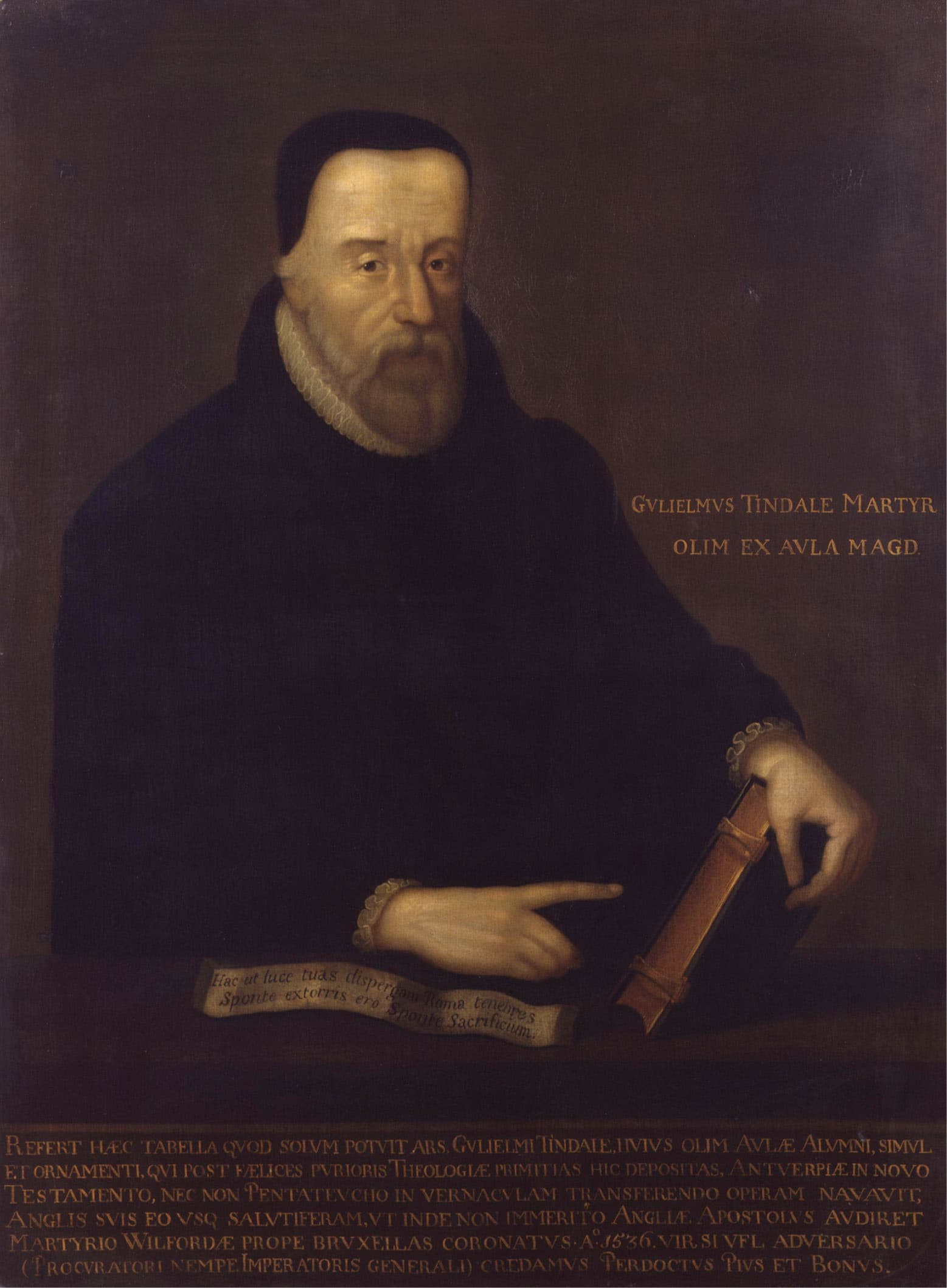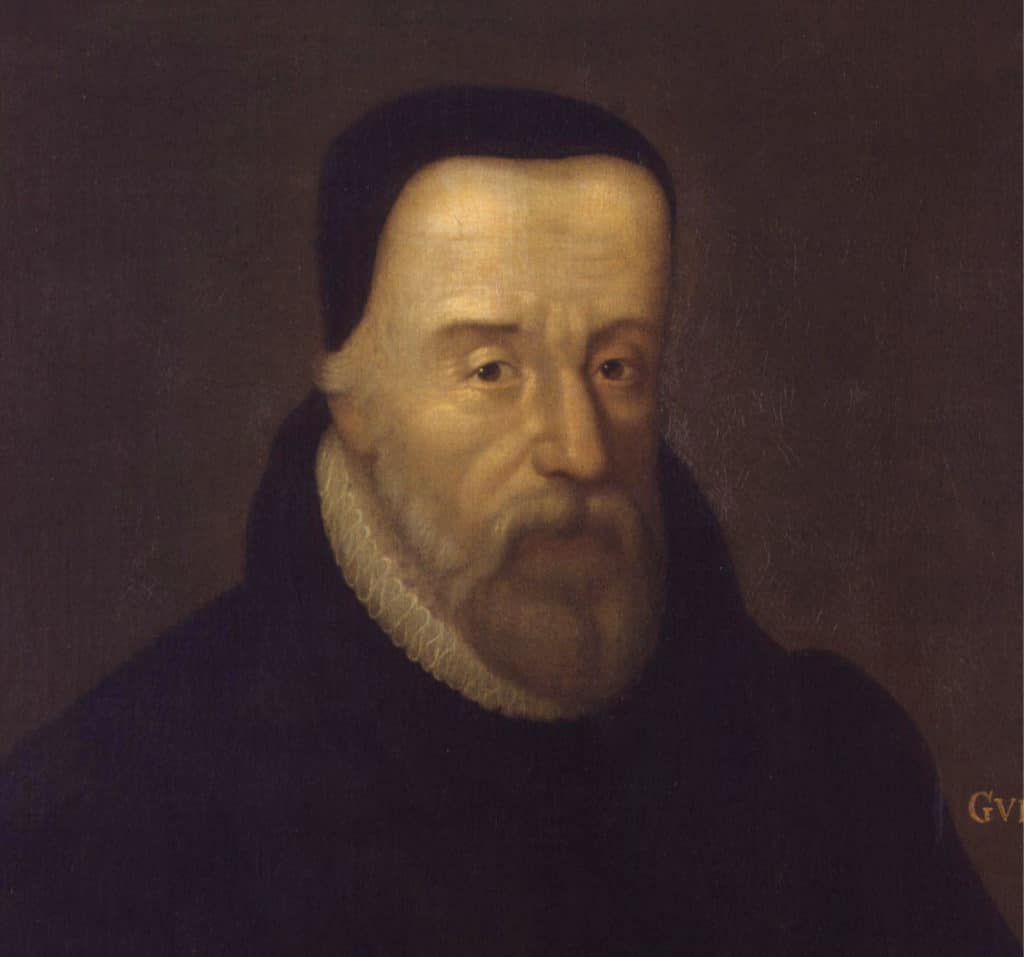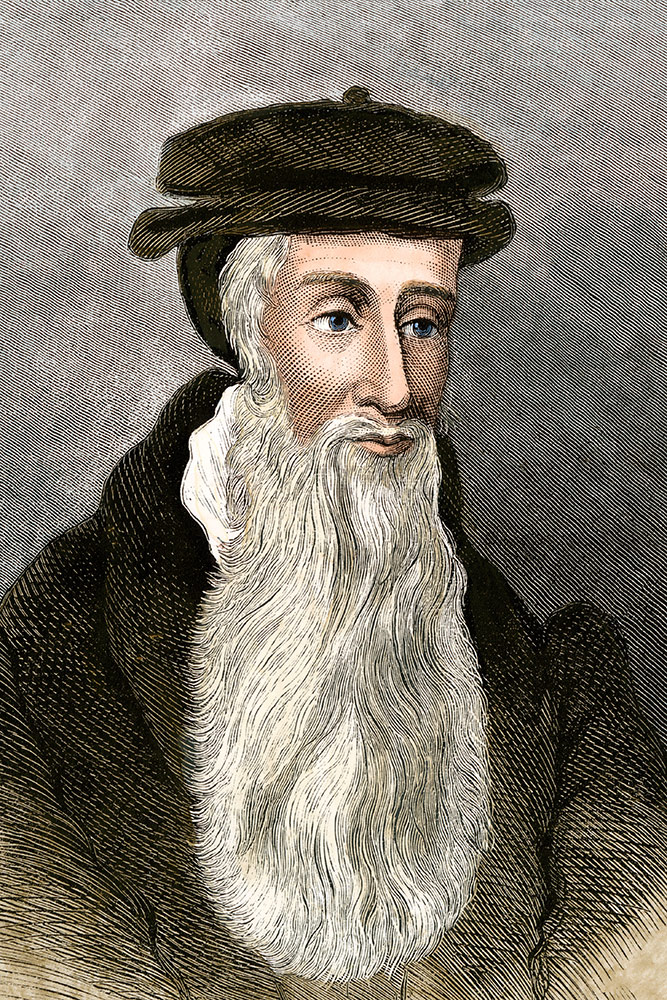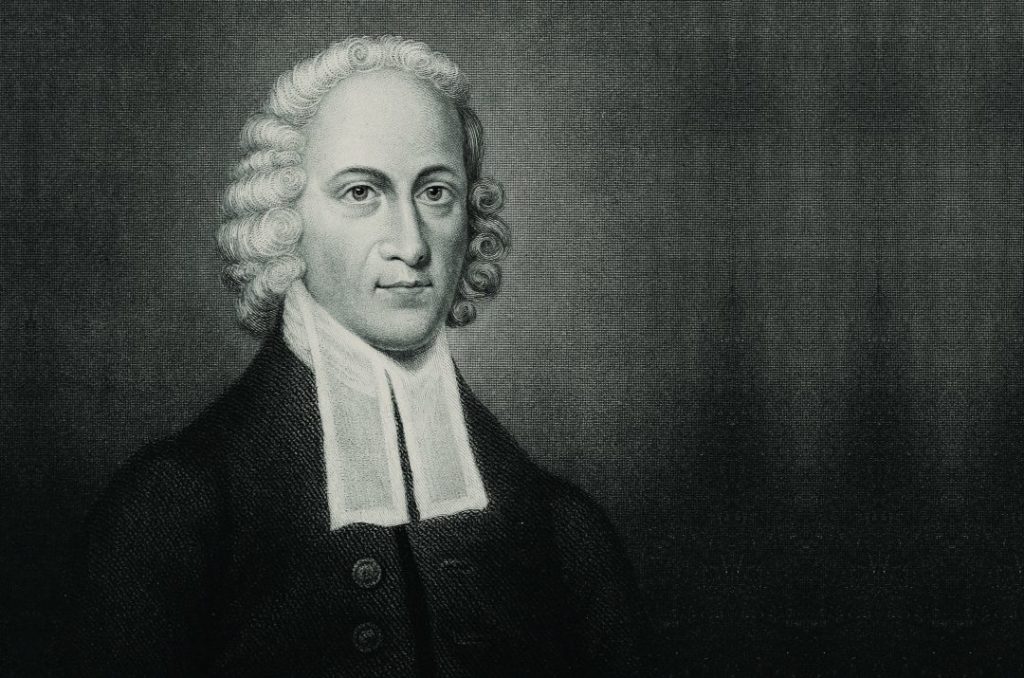
Featured prominently in my study, as though looking over my right shoulder, is a reproduction of a stunning portrait of the great Bible translator William Tyndale (1494–1536). Painted in oil on canvas, the original work is from the brush of an unknown artist. It was produced in the late seventeenth or early eighteenth century and now hangs in the National Portrait Gallery in London. As the subject of the portrait, Tyndale is seated, dressed all in black, and surrounded by a subdued dark-brown background. His face and hands seem to glow from the light of a candle that is hidden from view.
Tyndale’s left hand is balancing a book, keeping it horizontal lest it fall. This book is a Bible, the collection of divinely inspired writings that Tyndale devoted his life to translating from the Hebrew and Greek into English. His right hand appears to be resting on a dark table, while his right index finger is pointing emphatically to the Bible. Tyndale is directing the observer’s attention away from himself, and instead drawing every eye toward this sacred Book in which he resolutely believed and to which he dedicated his whole life.
By translating the Bible into English, this brilliant linguist ignited the flame that would banish the spiritual darkness in England. Tyndale’s translation of the Scriptures unveiled the divine light of biblical truth that shined across the English-speaking world, ushering in the dawning of a new day.
As Tyndale entered the world scene, England lay covered under a dark night of spiritual darkness. The Church in England remained shrouded in the midnight of spiritual ignorance. The knowledge of the Scriptures had been all but extinguished in the land. Although there were some twenty thousand priests in England, it was said that they could not so much as translate into English a simple clause from the Pater noster—the Lord’s Prayer. The clergy were so bogged down in a mire of religious superstition that they had no knowledge of the truth.
In the background of this portrait, behind Tyndale, are the words Gulielmus Tindilus Martyr. This is the Latin rendering of this scholar’s first and last name. The word martyr identifies the high cost paid by Tyndale to bring the Scripture into the language of his countrymen. This heroic figure died a martyr’s death in 1536, strangled to death by an iron chain, after which his corpse was burned and blown up by gunpowder that had been spread around his incinerated body.
This portrait of Tyndale hangs in my study as a constant visual reminder of the invaluable treasure that sits on my desk, the English Bible. It underscores the fact that as I preach its truths, spiritual light is being sent forth into this dark world. Moreover, this portrait bears witness to me of the great price required to unveil its truth in this sin-blackened age.
*An excerpt from Steven J. Lawson, The Daring Mission of William Tyndale, (Sanford, FL: Reformation Trust Publishing, 2015).
Learn more about William Tyndale on our 2016 Scottish & English Reformation Study Tour with Dr. Steven J. Lawson and OnePassion Ministries. Find out more information about the tour by clicking the banner below.

Steven J. Lawson is the President of OnePassion Ministries. Dr. Lawson is also the Professor of Preaching at The Master’s Seminary and Teaching Fellow with Ligonier Ministries. The author of numerous books and articles.







